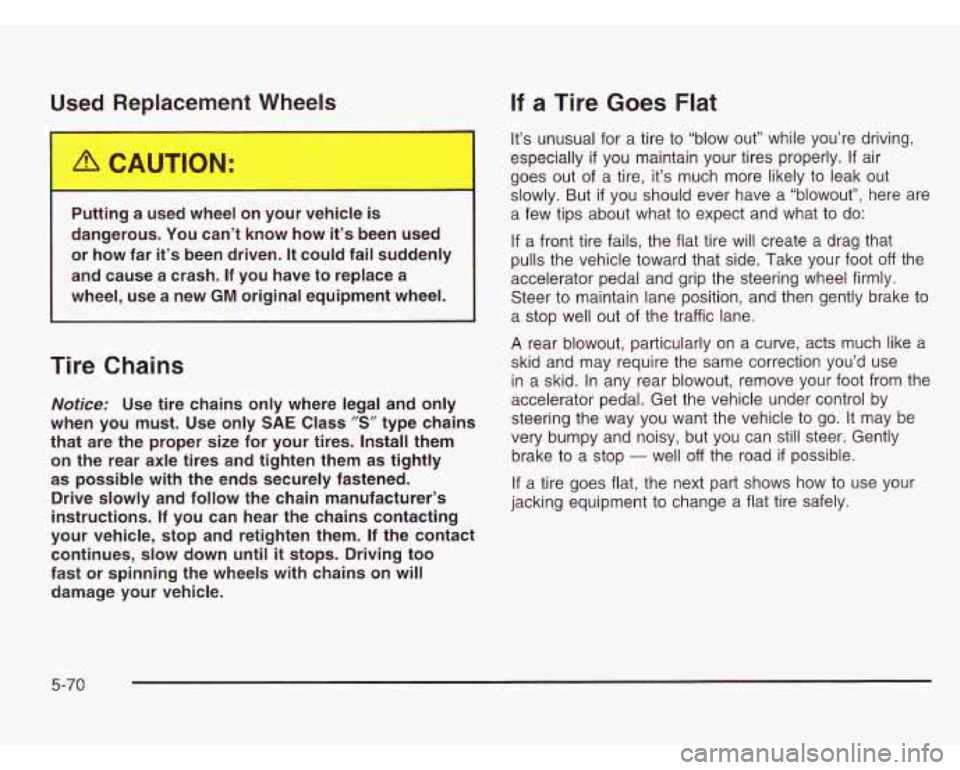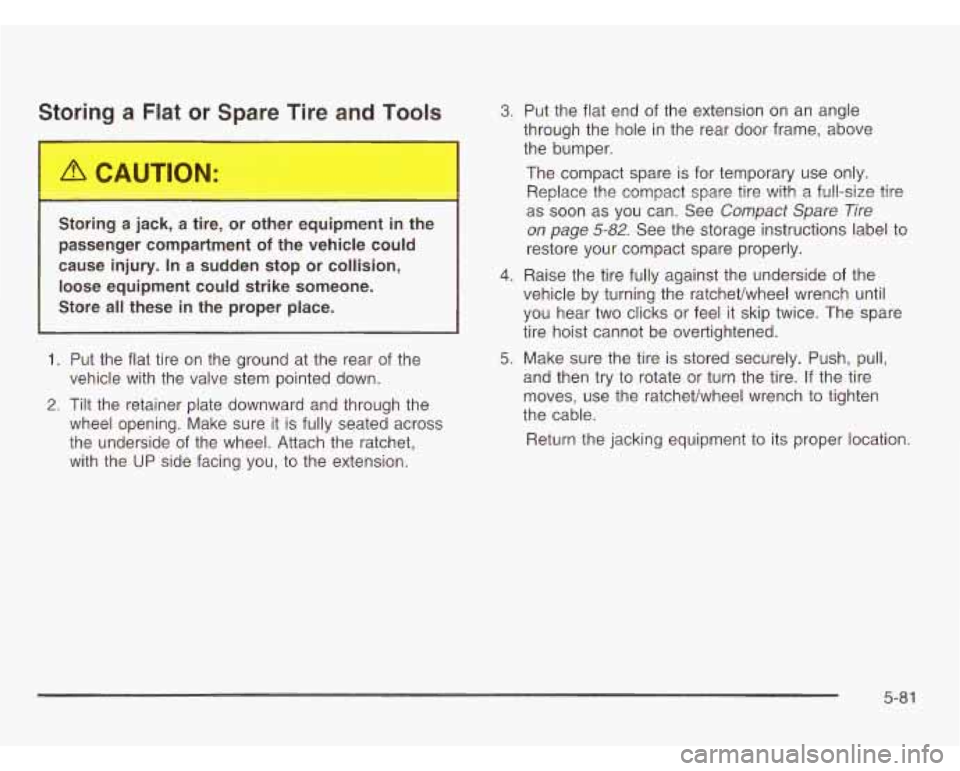Page 287 of 386

Used Replacement Wheels
Putting a uscu wheel on your vehicle is
dangerous. You can’t know how it’s been used or how far
it’s been driven. It could fail suddenly
and cause a crash. If you have to replace a
wheel, use a new
GM original equipment wheel.
Tire Chains
Notice: Use tire chains only where legal and only
when you must. Use only
SAE Class ”S” type chains
that are the proper size for your tires. Install them on the rear axle tires and tighten them as tightly
as possible with the ends securely fastened.
Drive slowly and follow the chain manufacturer’s
instructions.
If you can hear the chains contacting
your vehicle, stop and retighten them. If the contact
continues, slow down until
it stops. Driving too
fast or spinning
the wheels with chains on will
damage your vehicle.
If a Tire Goes Flat
It’s unusual for a tire to “blow out” while you’re driving,
especially
if you maintain your tires properly. If air
goes out of a tire, it’s much more likely to leak out
slowly. But
if you should ever have a “blowout”, here are
a few tips about what to expect and what to do:
If a front tire fails, the flat tire will create a drag that
pulls the vehicle toward that side. Take your foot off the
accelerator pedal and grip the steering wheel firmly.
Steer to maintain lane position, and then gently brake to
a stop well out of the traffic lane.
A rear blowout, particularly on a curve, acts much like a
skid and may require the same correction you’d use
in a skid. In any rear blowout, remove your foot from the
accelerator pedal. Get the vehicle under control by
steering the way you want the vehicle to go. It may be
very bumpy and noisy, but you can still steer. Gently
brake to a stop
- well off the road if possible.
If a tire goes flat, the next part shows how to use your
jacking equipment to change a flat tire safely.
5-70
Page 289 of 386
Removing the Spare Tire and Tools
The jacking equipment you’ll need is stored by your
vehicle’s rear doors, along the passenger’s side wall.
1. Remove the jack cover by pulling it away from
the side wall and down to release the tabs
securing the top of the cover.
2. Remove the wheel blocks by turning the top nut
counterclockwise. Remove the nut and washer,
then pull the wheel blocks
off the bolt.
3. Push down on the bolt and remove the hooked end
from the slot. Slide the jack toward the front of the
vehicle and lift it from the mounting. Remove
the extension and the ratchet from the pouch.
5-72
Page 298 of 386

Stori J a Flat or Spare Tire and Tools
Storing a jack, a tire, or other equipment in the
passenger compartment
of the vehicle could
cause injury. In
a sudden stop or collision,
loose equipment could strike someone.
Store all these in the proper place.
1. Put the flat tire on the ground at the rear of the
vehicle with the valve stem pointed down.
2. Tilt the retainer plate downward and through the
wheel opening. Make sure
it is fully seated across
the underside of the wheel. Attach the ratchet,
with the UP side facing you, to the extension.
3. Put the flat end of the extension on an angle
through the hole in the rear door frame, above
the bumper.
The compact spare is for temporary use only.
Replace the compact spare tire with a full-size tire
as soon as you can. See Compact Spare Tire
on page 5-82. See the storage instructions label to
restore your compact spare properly.
vehicle by turning the ratchevwheel wrench until
you hear two clicks or feel it skip twice. The spare
tire hoist cannot be overtightened.
4. Raise the tire fully against the underside of the
5. Make sure the tire is stored securely. Push, pull,
and then try to rotate or turn the tire. If the tire
moves, use the ratchet/wheel wrench
to tighten
the cable.
Return the jacking equipment to its proper location.
5-81